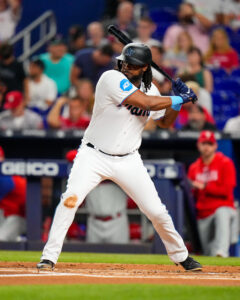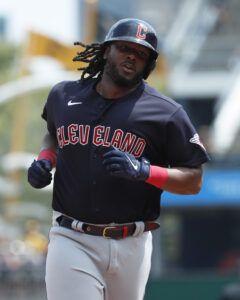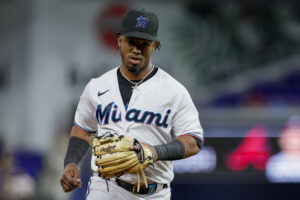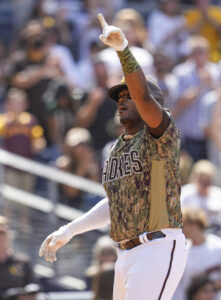If one were to look simply at first baseman Josh Bell’s production since joining the Marlins back in August, it would appear to be a foregone conclusion that Bell will decline his $16.5MM player option for the 2024 season and test free agency. After all, Bell has posted strong numbers since being traded to Miami at the deadline: he’s slashed .266/.338/.474 with 11 home runs in just 51 games as a Marlin. Given the weak upcoming free agent class on the positional side, that sort of production would place him as one of the better hitters in the class, below top-of-the-class stars Shohei Ohtani and Cody Bellinger but in the same conversation as the likes of Jeimer Candelario, Matt Chapman, and Jorge Soler.
Unfortunately for Bell, the decision isn’t that simple. The 30-year-old slugger has long been regarded among the streakiest hitters in the majors. Back in 2019, the switch-hitter appeared to be in the midst of a breakout season as he tore the cover off the ball for the Pirates in the first half, slashing an incredible .302/.376/.648 with 27 home runs en route to his first career All Star appearance. He returned in the second half having fallen back to Earth, however, and hit just .233/.351/.429 the rest of the way.
It was a similar story in 2022. Bell posted strong numbers with the Nationals for most of the season, slashing .301/.384/.493 in 437 trips to the plate. After being shipped to the Padres in a blockbuster deal alongside superstar Juan Soto, however, Bell struggled badly, posting a meager .192/.316/.271 slash line the rest of the way with a whopping 57.4% groundball rate. Those struggles prompted Bell to take a two-year, $33MM deal with the Guardians this past offseason with an opt-out after the 2023 campaign.
In 2023, Bell’s struggles came at the beginning of the season, as he hit .224/.330/.350 over the first two months of the season. While his final results in Cleveland were roughly league average (96 wRC+), they weren’t particularly close to the production Bell would have needed to show to justify leaving $16.5MM on the table this offseason to test the open market again. That said, his aforementioned hot stretch with the Marlins could have changed things for the 30-year-old, as it’s lifted his overall season slash line to an above-average .245/.325/.416. That figure improves to .256/.322/.449 in 96 games since the start of June, putting him in the same ballpark as his .259/.347/.453 career batting line.
While it’s unlikely that Bell would top his $16.5MM option by measure of AAV, nineteen hitters (including Bell himself) received a guarantee of $17MM or more last offseason. It’s not difficult to imagine Bell receiving more in free agency that Brandon Drury (two years, $17MM) or Justin Turner (two years, $21.7MM) did from the Angels and Red Sox last year. The aforementioned scarcity of quality hitters on the free agent market this coming offseason could also help Bell, should he decide to test the open market.
While first base is one of the better-populated positions this offseason, with players like Turner, Brandon Belt, and Garrett Cooper set to hit the open market after posting solid season, Bell has youth on his side relative to those veterans. He’ll play next season at age-31; only Ohtani, Bellinger, Candelario and Lourdes Gurriel Jr. have posted above average offensive seasons among free agents younger than Bell, though Chapman, Rhys Hoskins and Teoscar Hernandez will also have their age-31 campaigns in 2024.
Of course, things aren’t completely set in stone yet, even as the regular season wraps this weekend. With the Marlins favored to make the postseason, it’s possible Bell finds himself at the center of a surprise push deep into the postseason for Miami and posts big enough postseason numbers to impact his impending decision, which will come shortly after the World Series.
What do MLBTR readers think? If you were in Bell’s shoes, would you exercise your player option for next season and hope for a stronger platform season in 2024, or would you decline the option in search of a higher total guarantee on the open market?




